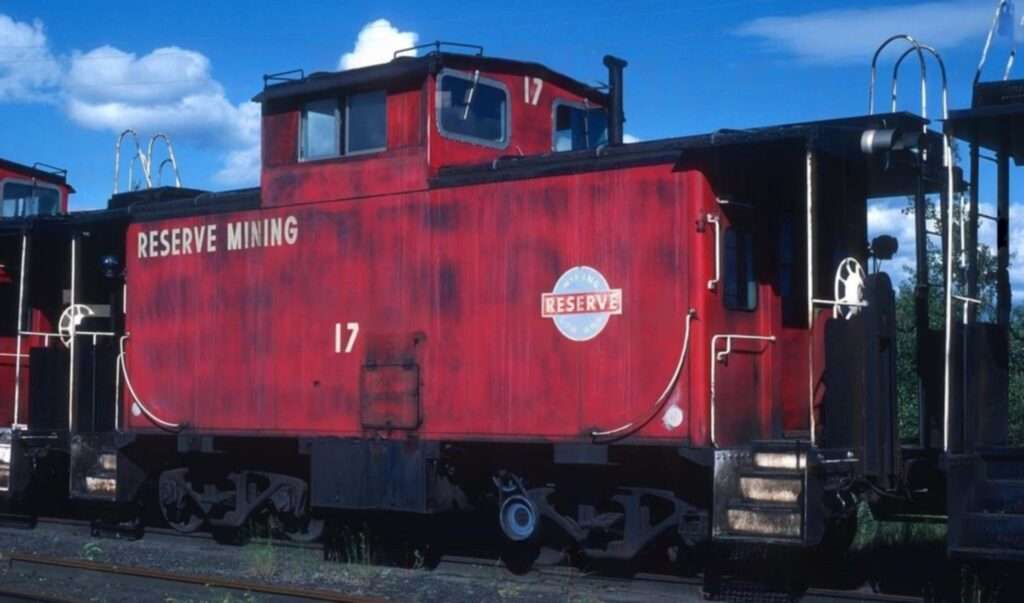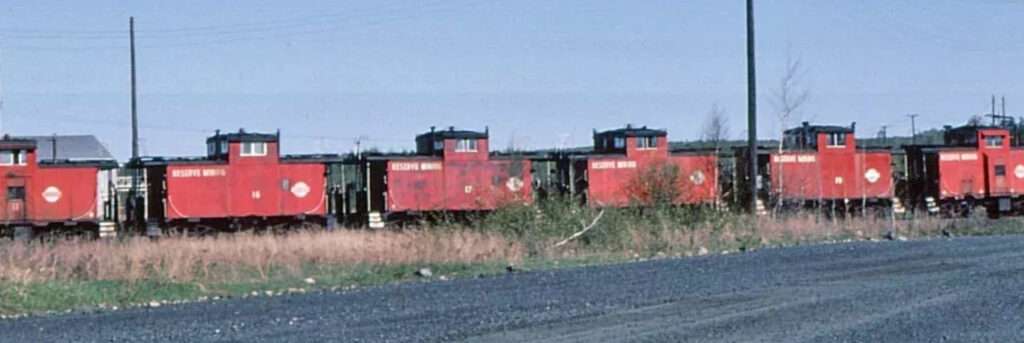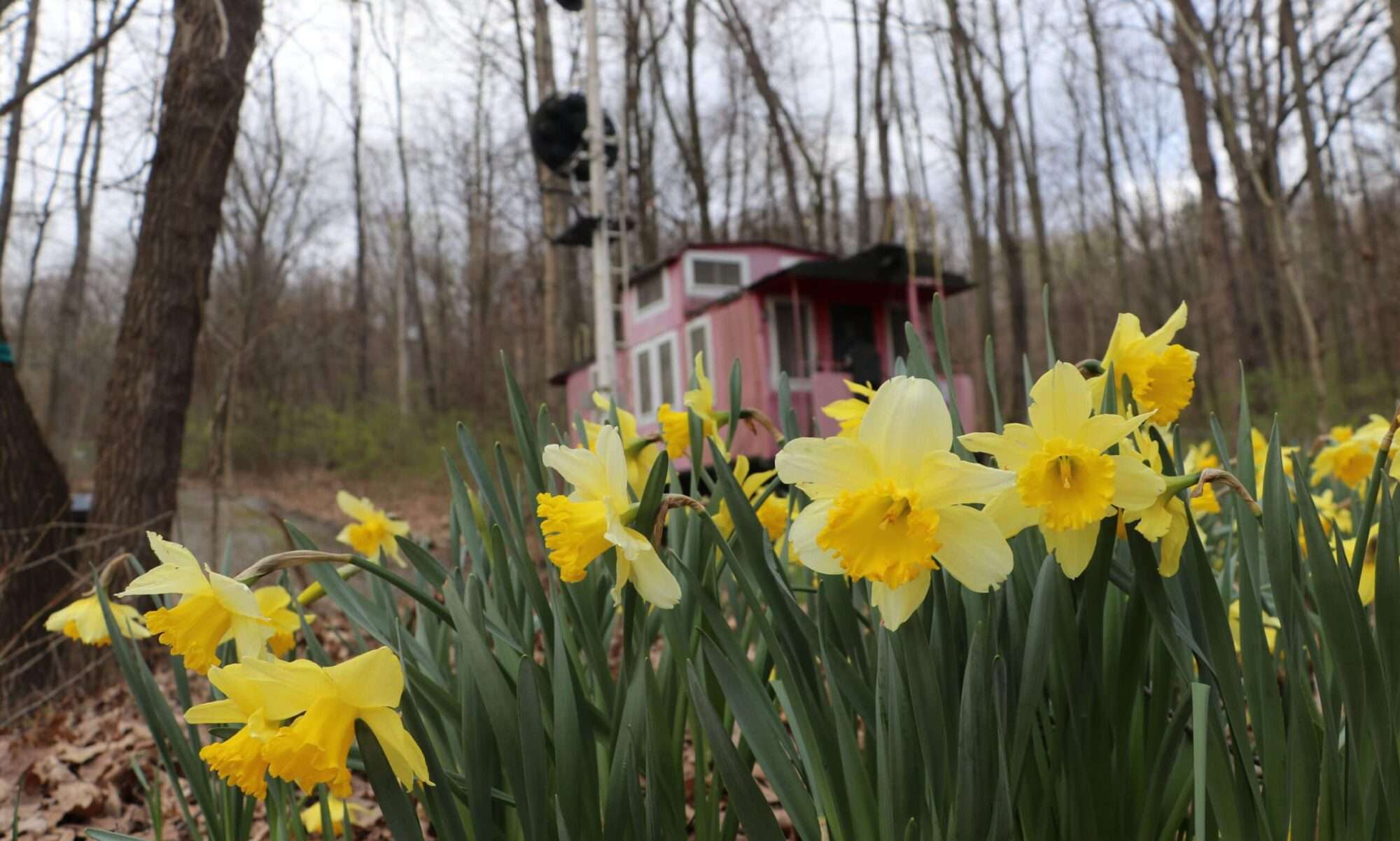

New Pictures of RM17
The photo, taken at Babbitt in 1987, shows Reserve Mining #17 in its original, unmodified form. At this time, the caboose had no windows along its car-body, a feature that was typical of the Reserve Mining fleet. However, several of RM17’s sister cabooses received upgrades over the years, including the addition of bay windows beneath their cupolas to give crews better visibility. While RM17 might have lacked the added comfort and sight-lines of its modified counterparts, it is still an important piece of iron range history.
The Reserve Mining Railroad
The Reserve Mining railroad played a pivotal role in this industrial network, hauling taconite from the mines to the processing plants, and ultimately feeding the heart of the American manufacturing machine. Cabooses like RM17 were part of this critical supply chain, ensuring that trains ran smoothly and safely through these rugged northern landscapes.
Babbitt: A Company Town with a Purpose
Babbitt’s history is inextricably linked to the iron ore industry. In 1944, the town was established to support a taconite mine operated by Armco and Republic Steel. The mine was part of a larger industrial network on the Mesabi Iron Range, one of the largest iron ore regions in the United States.
This remote town—located near the eastern border of the range—was built with one thing in mind: to provide workers for the new taconite mining operation. Workers in Babbitt extracted raw taconite, a low-grade iron ore that required processing to become useful in steelmaking. The taconite was transported by rail to Silver Bay, another company town located along the shores of Lake Superior, where it was processed into usable iron pellets. These pellets were then shipped to steel mills in industrial cities across the Great Lakes region, playing a crucial role in the steel production that powered the growth of the U.S. during the mid-20th century.
